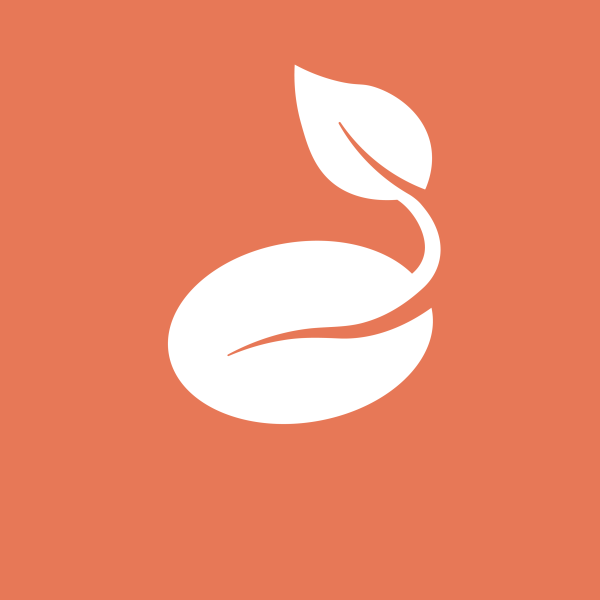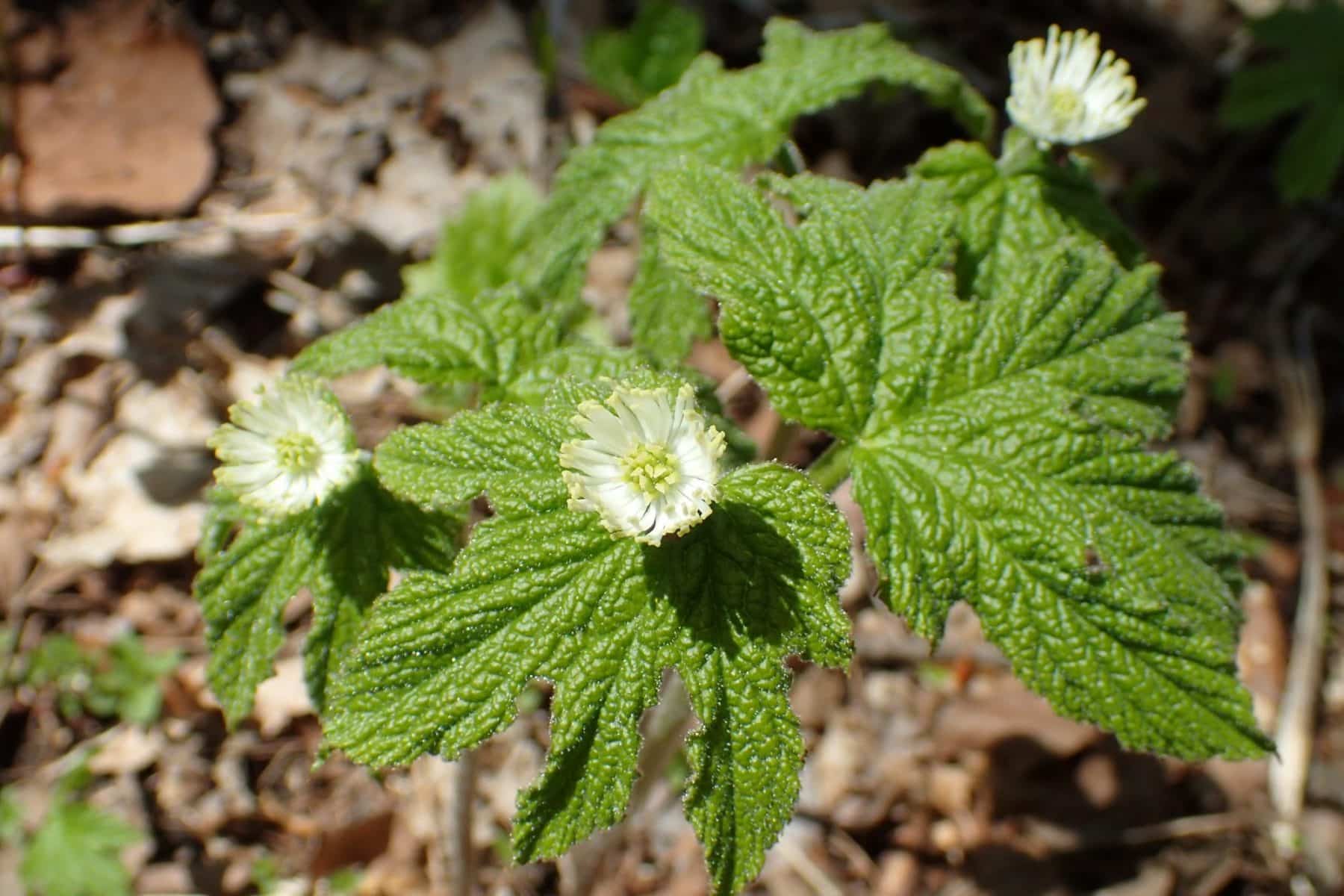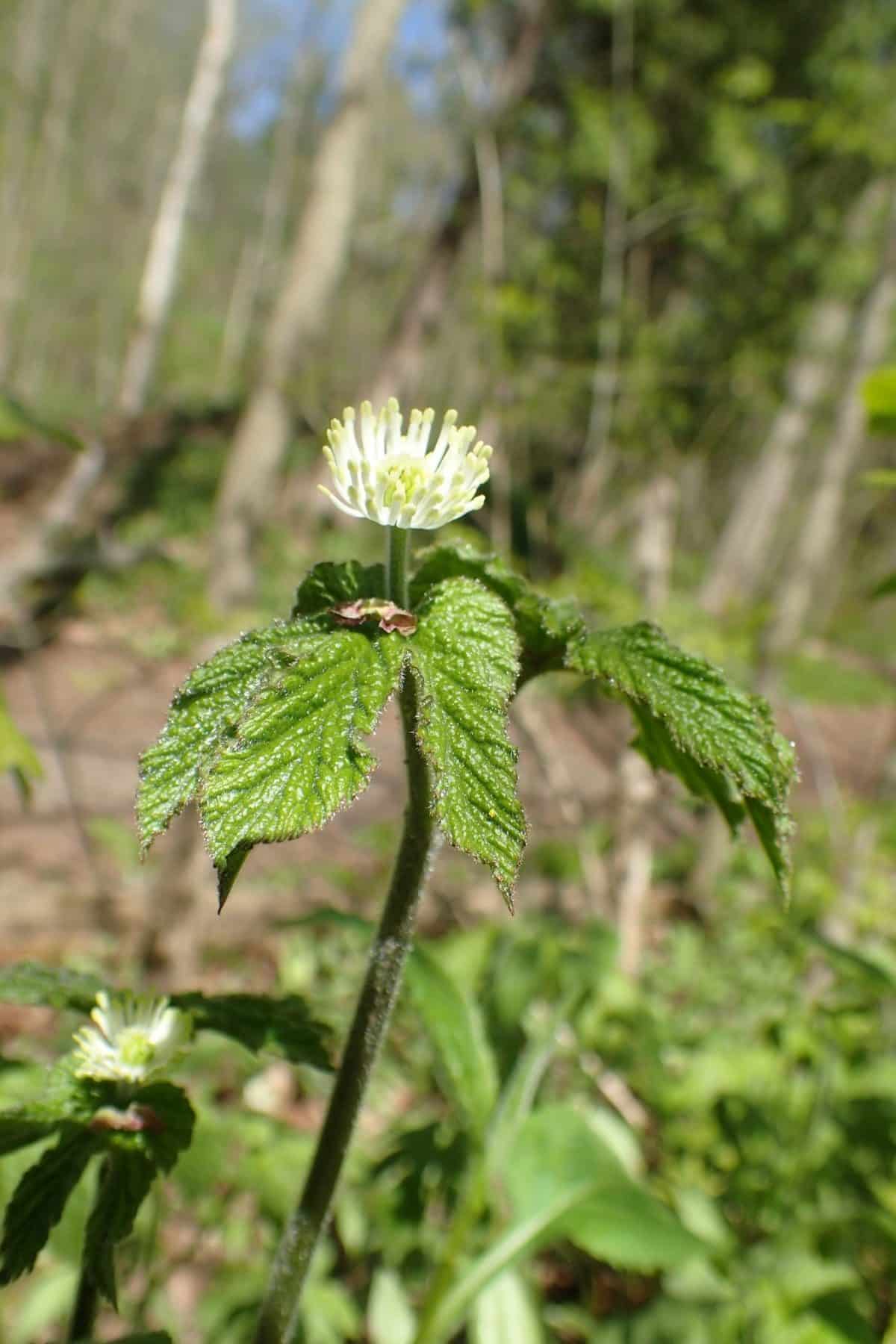-
How does it feel?
-
What can I use it for?
 Goldenseal is considered an endangered plant in the wild, so before you use it, make sure you are purchasing cultivated Goldenseal from a reputable source. The sustainability concerns of this plant means it is rarely used, and is often substituted for other plants containing berberine in many herbal formulas.
Goldenseal is considered an endangered plant in the wild, so before you use it, make sure you are purchasing cultivated Goldenseal from a reputable source. The sustainability concerns of this plant means it is rarely used, and is often substituted for other plants containing berberine in many herbal formulas.However, Goldenseal is an extremely effective antimicrobial herb applied both internally and externally. It can be applied to clean wounds, rashes, and fungal infections. It is also specific when there is excess mucous or catarrh in any mucous membrane, whether that is in the respiratory, digestive, or reproductive system.
As a bitter, it is excellent for stimulating digestion, helping the body produce and release bile, and promoting an appetite.
-
Into the heart of goldenseal
Goldenseal was used by indigenous people as a medicine in North America before the arrival of the settlers. It was valued as a wash for eyes and as a digestive remedy. This speaks to the value of its ability to soothe membranes and support digestion.
Herbalists often support digestion as a central aspect of a holistic treatment, as this is how the body absorbs nutrients and eliminates most toxins. A well-functioning digestive system must be in place for health, and so effective remedies for this system are highly valued in the dispensary.
-
Traditional uses
 The early settlers of the United States learned of the medicinal uses of Goldenseal from the indigenous people. The Cherokee used the plant as a stomachic, a remedy for sore eyes, and a yellow dye. The plant quickly became a popular remedy with the pioneers for these uses. BY the twentieth century, it was widely in use. By 1905, The United States of Agriculture had recognised the growing demand for the plant as a medicine, when an estimated 20,000lb to 30,000lb per year was being supplied.
The early settlers of the United States learned of the medicinal uses of Goldenseal from the indigenous people. The Cherokee used the plant as a stomachic, a remedy for sore eyes, and a yellow dye. The plant quickly became a popular remedy with the pioneers for these uses. BY the twentieth century, it was widely in use. By 1905, The United States of Agriculture had recognised the growing demand for the plant as a medicine, when an estimated 20,000lb to 30,000lb per year was being supplied.Traditionally, the root has been used as a wide-ranging digestive remedy. Goldenseal was applied in cases of digestive inflammation, constipation, haemorrhoids, vomiting, dyspepsia, and loss of appetite. It was used as a snuff for nasal catarrh. Reportedly, it was historically used in cases of sexually transmitted diseases, though this is not an acceptable application of herbal medicine currently. It has been used in labour to aid in contractions, though this use is not recommended.
It was considered to be a specific to prevent pitting of small pox.
-
Traditional actions
Herbal actions describe therapeutic changes that occur in the body in response to taking a herb. These actions are used to express how a herb physiologically influences cells, tissues, organs or systems. Clinical observations are traditionally what have defined these actions: an increase in urine output, diuretic; improved wound healing, vulnerary; or a reduction in fever, antipyretic. These descriptors too have become a means to group herbs by their effects on the body — herbs with a nervine action have become the nervines, herbs with a bitter action are the bitters. Recognising herbs as members of these groups provides a preliminary familiarity with their mechanisms from which to then develop an understanding of their affinities and nuance and discern their clinical significance.
-
Traditional energetic actions
Herbal energetics are the descriptions Herbalists have given to plants, mushrooms, lichens, foods, and some minerals based on the direct experience of how they taste, feel, and work in the body. All traditional health systems use these principles to explain how the environment we live in and absorb, impacts our health. Find out more about traditional energetic actions in our article “An introduction to herbal energetics“.
-
What practitioners say
 Goldenseal is considered an extremely effective tonic for mucous membranes, and may be applied in a formula tending to any mucous membrane that may be over-producing catarrh or mucus.
Goldenseal is considered an extremely effective tonic for mucous membranes, and may be applied in a formula tending to any mucous membrane that may be over-producing catarrh or mucus.Digestive system
Goldenseal continues to be an excellent remedy for many digestive complaints because of its tonic effect on mucous membranes. Its bitter activity helps stimulate bile flow for cases of sluggish digestion or lack of appetite. It is also well applied to digestive ulcerations, such as peptic ulcers, and colitis. Goldenseal is especially indicated if there are hepatic symptoms.
Integumentary system (skin)
Goldenseal is very antimicrobial and anti-inflammatory which makes it a great remedy for wounds, fungal infections, and rashes. The tincture can be added to a cream. The powder is also useful topically. Goldenseal may also be added to a wash for infections of the eyes, mouth, and gums.
Reproductive system
Goldenseal, although a uterine stimulant, is also anti-hemorrhagic and can be used in a formula to assist in reducing heavy menstrual bleeding. Goldenseal can also be used in a douche for thrush and other vaginal infections.
-
Research
 There is limited available clinical research on the root of Goldenseal, though berberine has been the focus of many studies.
There is limited available clinical research on the root of Goldenseal, though berberine has been the focus of many studies.In animal and human studies, berberine has shown to be hypoglycaemic (1). In one pilot human study, berberine was found to be comparable to metformin for the treatment of diabetes mellitus 2 (2). As berberine has been found to increase insulin sensitivity, it is also useful in the treatment of polycystic ovarian syndrome (PCOS). One study found that administration of berberine improved ovulation rate in patients with PCOS (3).
Berberine has also been found to improve cardiovascular parameters. Berberine has been found to lower blood pressure, lower blood lipids, and have anti-arrhythmic effects (4,5,6).
Berberine has been demonstrated to have a wide spectrum cytotoxic activity against human cancer cell lines (7). In addition to this, it has shown chemoprotective activity in vitro and in vivo (8).
The anti-bacterial properties of berberine have also been extensively studied. It has been shown to be effective against Actinobacillus pleuropneumoniae, Shigella dysenteriae, Streptococcus agalactiae, and Helicobacter pylori. It has also been demonstrated to increase the effectiveness of antibiotics against antibiotic resistant strains of bacteria (5).
Further human trials with both Goldenseal and its constituents are required.
-
Did you know?
Goldenseal was traditionally used as a dye by the Cherokee in North America.
Additional information
-
Botanical description
Goldenseal is a small herbaceous perennial herb that grows up to 30cm tall. The thick, knotted rhizome is yellow-is brown on the outside, with bright yellow interior pulp and has numerous roots growing from it. The stem is erect, thick and hairy, and grows from the root in spring. There are two leaves, that are alternate, dark green, and the lower leaf is larger than the upper leaf. There is one solitary flower with no petals but several stamens and pistils. The fruit looks like an enlarged raspberry. It flowers from April to May and fruits in July.
The plant is native to North America, and grows best in moist deciduous woodland. It requires 75% shade and moist, well-drained, rich soil that is covered in dead leaves. The roots are harvested in the second or third year.
Due to being over harvested over a prolonged period of time, Goldenseal was listed as endangered in 1997 and is now rarely found in a wild habitat. Cultivated Goldenseal should be sought for medicinal use, and it used rarely by herbalists because of the sustainability concerns.
-
Common names
- Goldenseal
- Yellow root
- Orange root
- Yellow puccoon
- Ground raspberry
- Wild curcuma
- Jaundice root
- Eye root
- Eye balm
- Hydrastis root
-
Safety
When used within the recommended dose, Goldenseal is considered a safe herb.
Goldenseal is contraindicated for those with high blood pressure as hydrastine may increase blood pressure. Prolonged use may inhibit vitamin B absorption.
Goldenseal is not recommended for use during pregnancy or lactation.
Due to the high price of the root and its status as an endangered plant, many Goldenseal products may be adulterated. Sourcing sustainable and reputable Goldenseal is imperative to safety.
-
Dosage
- Dried root: 0.7-2g per day
- Tincture 1:3: 2-4ml per day
- Tincture 1:5: 3.5-7ml per day
-
Constituents
- Isoquinoline alkaloids (2.5- 6%): hydrastine (3.2-4%), berberine (up to 6%), canadine (0.5-1%), berberastine (2-3%)
- Fatty acids
- resin
- phenylpropanoids: meconin, chlorogenic acid
- phytosterins
- small amount of volatile oil

-
Sustainability
Find out more about Goldenseal’s sustainability status
-
Recipe
Digestive bitter concoction
Ingredients:
- 15g Dandelion root
- 10g Goldenseal or Oregon Grape root
- 15g Bitter orange peel
- 5g Liquorice root
Method:
- Mix all ingredients well together.
- Take 2 tsp and boil in 1 cup of water for 5 minutes.
- Not suitable for those who are pregnant or who have high blood pressure.
-
References
- Zhang Y, Li X, Zou D et al. Treatment of Type 2 Diabetes and Dyslipidemia with the Natural Plant Alkaloid Berberine. The Journal of Clinical Endocrinology & Metabolism. 2008;93(7):2559-2565. doi:10.1210/jc.2007-24046.
- Yin J, Xing H, Ye J. Efficacy of berberine in patients with type 2 diabetes mellitus. Metabolism. 2008;57(5):712-717. doi:10.1016/j.metabol.2008.01.0137.
- Li L, Li C, Pan P et al. A Single Arm Pilot Study of Effects of Berberine on the Menstrual Pattern, Ovulation Rate, Hormonal and Metabolic Profiles in Anovulatory Chinese Women with Polycystic Ovary Syndrome. PLoS One. 2015;10(12):e0144072. doi:10.1371/journal.pone.01440728.
- Lan J, Zhao Y, Dong F et al. Meta-analysis of the effect and safety of berberine in the treatment of type 2 diabetes mellitus, hyperlipemia and hypertension. J Ethnopharmacol. 2015;161:69-81. doi:10.1016/j.jep.2014.09.0499.
- Imenshahidi M, Hosseinzadeh H. Berberine and barberry (Berberis vulgaris): A clinical review. Phytotherapy Research. 2019;33(3):504-523. doi:10.1002/ptr.625210.
- Zeng X, Zeng X, Li Y. Efficacy and safety of berberine for congestive heart failure secondary to ischemic or idiopathic dilated cardiomyopathy. Am J Cardiol. 2003;92(2):173-176. doi:10.1016/s0002-9149(03)00533-2
- Cheng Y-T, Yang C-C, Shyur L-F. Phytomedicine—Modulating oxidative stress and the tumor microenvironment for cancer therapy. Pharmacological Research. 2016;114:128-143. doi:10.1016/j.phrs.2016.10.022
- Chidambara Murthy KN, Jayaprakasha GK, Patil BS. The natural alkaloid berberine targets multiple pathways to induce cell death in cultured human colon cancer cells. European Journal of Pharmacology. 2012;688(1-3):14-21. doi:10.1016/j.ejphar.2012.05.004


























 Goldenseal is considered an endangered plant in the wild, so before you use it, make sure you are purchasing cultivated Goldenseal from a reputable source. The sustainability concerns of this plant means it is rarely used, and is often substituted for other plants containing berberine in many herbal formulas.
Goldenseal is considered an endangered plant in the wild, so before you use it, make sure you are purchasing cultivated Goldenseal from a reputable source. The sustainability concerns of this plant means it is rarely used, and is often substituted for other plants containing berberine in many herbal formulas. The early settlers of the United States learned of the medicinal uses of Goldenseal from the indigenous people. The Cherokee used the plant as a stomachic, a remedy for sore eyes, and a yellow dye. The plant quickly became a popular remedy with the pioneers for these uses. BY the twentieth century, it was widely in use. By 1905, The United States of Agriculture had recognised the growing demand for the plant as a medicine, when an estimated 20,000lb to 30,000lb per year was being supplied.
The early settlers of the United States learned of the medicinal uses of Goldenseal from the indigenous people. The Cherokee used the plant as a stomachic, a remedy for sore eyes, and a yellow dye. The plant quickly became a popular remedy with the pioneers for these uses. BY the twentieth century, it was widely in use. By 1905, The United States of Agriculture had recognised the growing demand for the plant as a medicine, when an estimated 20,000lb to 30,000lb per year was being supplied. Goldenseal is considered an extremely effective tonic for mucous membranes, and may be applied in a formula tending to any mucous membrane that may be over-producing catarrh or mucus.
Goldenseal is considered an extremely effective tonic for mucous membranes, and may be applied in a formula tending to any mucous membrane that may be over-producing catarrh or mucus. There is limited available clinical research on the root of Goldenseal, though berberine has been the focus of many studies.
There is limited available clinical research on the root of Goldenseal, though berberine has been the focus of many studies.




